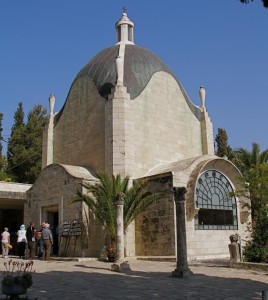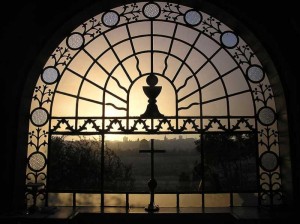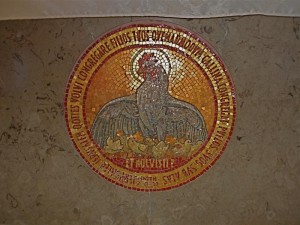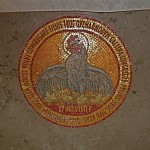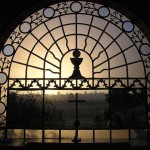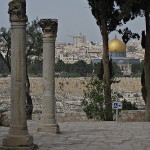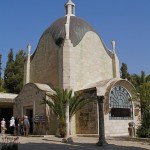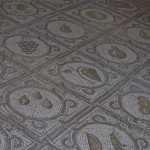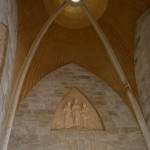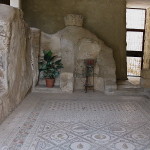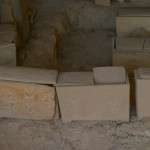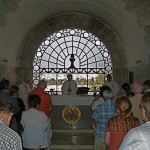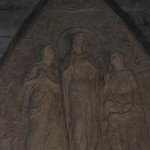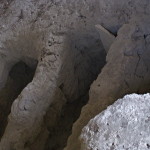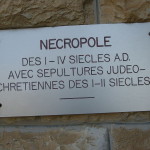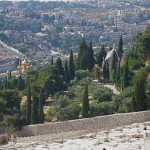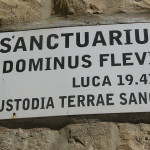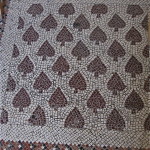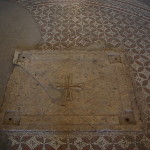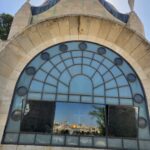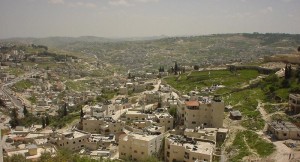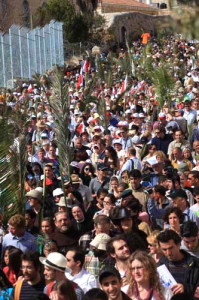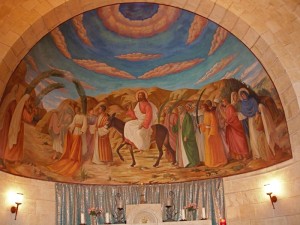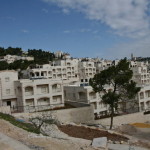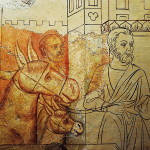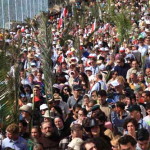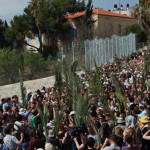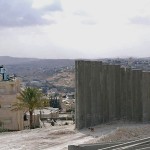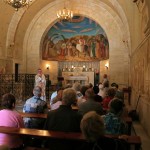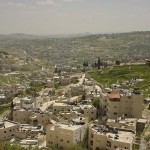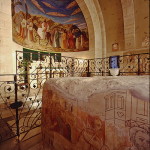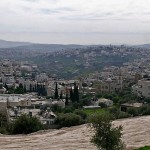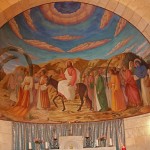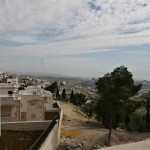Jerusalem
The little teardrop Church of Dominus Flevit, halfway down the western slope of the Mount of Olives, recalls the Gospel incident in which Jesus wept over the future fate of Jerusalem.
This poignant incident occurred during Jesus’ triumphal entry into Jerusalem on the first Palm Sunday, when crowds threw their cloaks on the road in front of him and shouted, “Blessed is the king who comes in the name of the Lord!”
Looking down on the city, Jesus wept over it as he prophesied its future destruction. Enemies would “set up ramparts around you and surround you, and hem you in on every side . . . crush you to the ground . . . and they will not leave within you one stone upon another; because you did not recognise the time of your visitation from God.” (Luke 19:37-44)
Within 40 years, in AD 70, Jesus’ prophesy was fulfilled. Roman legions besieged Jerusalem and, after six months of fighting, burnt the Temple and levelled the city.
Teardrop shape recalls Christ’s grief
The panoramic view from the Church of Dominus Flevit (Latin for “the Lord wept”) makes it easy to imagine the scene as Christ looked down on the city.
• Rising proud behind the city wall, in the place of today’s Dome of the Rock, stood the Temple — a gleaming vision of white marble and gold facings, huge bronze doors and colonnaded porticos.
• Beyond rose the grand Hasmonean palace, then serving as the Praetorium, and Herod’s Upper Palace with its three enormous towers.
• And in the houses and the streets were the men, women and children of Jerusalem, unaware of the fate that was to befall the Holy City.
Italian architect Antonio Barluzzi symbolised Christ’s grief over the city by designing the Dominus Flevit Church in the shape of a teardrop, with tear phials on the four corners of its dome.
At the foot of the altar, a mosaic of a hen gathering her chickens under her wings recalls Christ’s words “Jerusalem, Jerusalem, the city that kills the prophets and stones those who are sent to it! How often have I desired to gather your children together as a hen gathers her brood under her wings, and you were not willing!” (Luke 13:34)
Behind the altar is a much-photographed picture window overlooking the city. The cross and chalice in its arch-shaped design focus not on the Dome of the Rock but on the Church of the Holy Sepulchre.
Ancient mosaic floor is preserved
The Church of Dominus Flevit was built in 1955, but occupies an ancient site. It stands on the ruins of a Byzantine church from the 5th century, dedicated to the prophetess St Anna, and in an area of tombs dating back as far as 1600 BC.
Examples of the two types of tombs discovered by excavators have been left visible.
Also unearthed were the remains of an elaborate mosaic floor from the Byzantine church. It has been preserved, to the left of the entrance.
The mosaic is richly decorated with intersecting circles and pictures of fruit, leaves and flowers.
An inscription in Greek refers to Simon, a “friend of Christ”, who “decorated this place of prayer and offered it to Christ our Lord for the forgiveness of his sins and for the repose of his brother . . . .”
In Scripture:
Jesus laments over Jerusalem: Luke 13:34
Jesus weeps over Jerusalem: Luke 19:37-44
Administered by: Franciscan Custody of the Holy Land
Tel.: 972-2-6266450
Open: 8-11.45am; 2.30-5pm
- Hen and chickens on altar in Church of Dominus Flevit (Seetheholyland.net)
- Window behind the altar in the Church of Dominus Flevit (© Custodia Terrae Sanctae)
- Looking from Dominus Flevit to the Dome of the Rock (© Deror Avi)
- Teardrop-shaped Church of Dominus Flevit (Seetheholyland.net)
- Detail of mosaic floor at Church of Dominus Flevit (© Deror Avi)
- Ceiling of Church of Dominus Flevit (© Tom Callinan / Seetheholyland.net)
- Mosaic floor at Church of Dominus Flevit (© Deror Avi)
- Ossuaries at Church of Dominus Flevit (© Deror Avi)
- Eucharist in Church of Dominus Flevit (Seetheholyland.net)
- Relief in Church of Dominus Flevit Church (© Deror Avi)
- Tombs at Church of Dominus Flevit (© Deror Avi)
- Notice for tombs at Church of Dominus Flevit (© Deror Avi)
- Dominus Flevit and the Church of St Mary Magdalene (Seetheholyland.net)
- Notice at Church of Dominus Flevit (© Deror Avi)
- Detail of mosaic floor at Church of Dominus Flevit (© Deror Avi)
- Cross in floor at Church of Dominus Flevit (© Deror Avi)
- The front window of Dominus Flevit Church reflecting old and new Jerusalem (Patsy O’Sullivan / Seetheholyland.net)
References
Bar-Am, Aviva: Beyond the Walls: Churches of Jerusalem (Ahva Press, 1998)
Inman, Nick, and McDonald, Ferdie (eds): Jerusalem & the Holy Land (Eyewitness Travel Guide, Dorling Kindersley, 2007)
Murphy-O’Connor, Jerome: The Holy Land: An Oxford Archaeological Guide from Earliest Times to 1700 (Oxford University Press, 2005)
Pixner, Bargil: With Jesus in Jerusalem – his First and Last Days in Judea (Corazin Publishing, 1996)
Walker, Peter: In the Steps of Jesus (Zondervan, 2006)
External links

